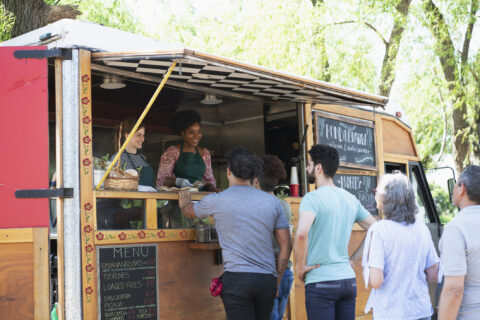Public benefits form a critical safety net for millions of individuals and families nationwide. Public benefits and services encompass a wide spectrum of daily life, from nutrition assistance such as SNAP to housing support such as Low-Income Home Energy Assistance Program (LIHEAP) to safe and no-cost community tax preparation in the VITA/TCE programs.
Ensuring access to these benefits and services helps communities thrive by connecting residents to critical services that support their basic needs and increasing access to economic mobility. Municipal leaders are uniquely positioned to showcase the importance of public benefits and create connections to public benefit providers for members of their communities. For this blog, NLC will be highlighting some of the key findings from Results for America’s Economic Mobility Catalog strategy on the issue area of Reducing Obstacles to Receiving Public Benefits. Additionally, the blog will feature a few municipal examples and how you can engage NLC to improve your own benefits access strategies.
Strategy Outline and Practice
Human-Centered Design
A common phrase that emerges in this strategy is “human-centered design.” In a local policy and program setting, taking a “human-centered design” means that the programmatic elements leverage the real-world experiences of the residents accessing the benefits or services. By centering the humans in their community with their unique needs, lifestyle and background, municipalities will be better positioned to target specific demographics and audiences. In other words, meeting residents where they are will facilitate more natural and fruitful connections, leading to improved access to public services and benefits. For local leaders looking to implement a human-centered design program, identify one or more key audiences to target in these efforts. From there, work with residents with lived experience or trusted community groups serving those audiences to develop a program that meets their specific needs.
Some common examples are:
- Providing flexible appointment hours or on-site childcare for working caregivers.
- Providing translated materials or on-site translation for limited English proficiency audiences.
- Hosting outreach/community engagements in complement with key holidays, ideally in partnership with known community spaces and organizations, such as Lunar New Year and Ramadan.
Streamlining Information and Applications
The sheer volume and complexity of the applications can be a large impediment for residents attempting to access their benefits. By using plain, streamlined and easy-to-understand language in both outreach materials and applications, residents are more likely to complete the applications fully and accurately. Additionally, a consolidated application that allows residents to apply for multiple benefits at once can help improve uptake. By creating a “one-stop shop,” residents are better positioned to get the benefits they need without having to complete applications with duplicative information. A streamlined application process also benefits public sector staff and partner organizations by reducing the number of applications that need clarification or follow-up, which helps minimize delays and backlogs and enhances overall service delivery capacity.
In order to streamline your community’s benefits access information, consider the following activities:
- Work with your state and county authorities and agencies to review the current benefit applications your residents typically have to complete.
- Create a single “intake” application and referral system that creates handoffs between benefit providers and partner organizations.
- Engage key staff in local economic development, neighborhood services or community engagement roles to share information on where residents can go to access support for their benefits application.
Designated Digital Delivery
As more benefits programs transition to digital-only or digital-preferred formats, municipalities need to match this increase by dedicating digital structures to their programs. For many people nationwide, the primary way to access the internet is through their mobile devices. To better meet the needs of their residents, municipalities should focus on creating mobile-friendly webpages and forms.
Beyond mobile-friendly webpages, municipalities can try some of the following strategies to improve their digital service delivery:
- Pilot an outreach program focused on mobile device users (e.g., text messaging, short-form videos, etc.).
- Create a new intake form or modify an existing one to capture the needs of residents using mobile device-friendly tactics such as minimal typing, check box answers and on-screen progress bars.
- Support the development of data-sharing agreements between benefits program providers, community-based organizations and municipalities to track shared metrics, potential clients and areas for improvement.
If you are a local leader interested in lowering barriers to benefits access in your community, feel free to reach out to NLC’s Economic Opportunity and Financial Empowerment (EOFE) team at eofe@nlc.org.
Municipal Examples
Given the wide spectrum of potential ideas and strategies, local leaders can take some inspiration from a selection of municipalities within the NLC membership:
- The City of South San Francisco, CA (pop. 66,105) hosted a series of culturally important holiday and community-focused events to increase Asian American and Pacific Islander (AAPI) participation in their benefits navigation program.
- The Community Empowerment and Opportunity (CEO) office in the City of Philadelphia, PA (pop. 1,603,797) is piloting a text message-based outreach strategy to increase engagement in their benefit navigation program called BenePhilly.
- The City of Louisville, KY (pop. 633,045) is utilizing tax time and their VITA program to provide wraparound integrations to their Financial Empowerment Center, BankOn and other financial stability programs.
Explore the Economic Mobility Catalog
Search through a library of strategies by issue area, including Reducing Obstacles to Receiving Public Benefits, which is highlighted in this blog.









